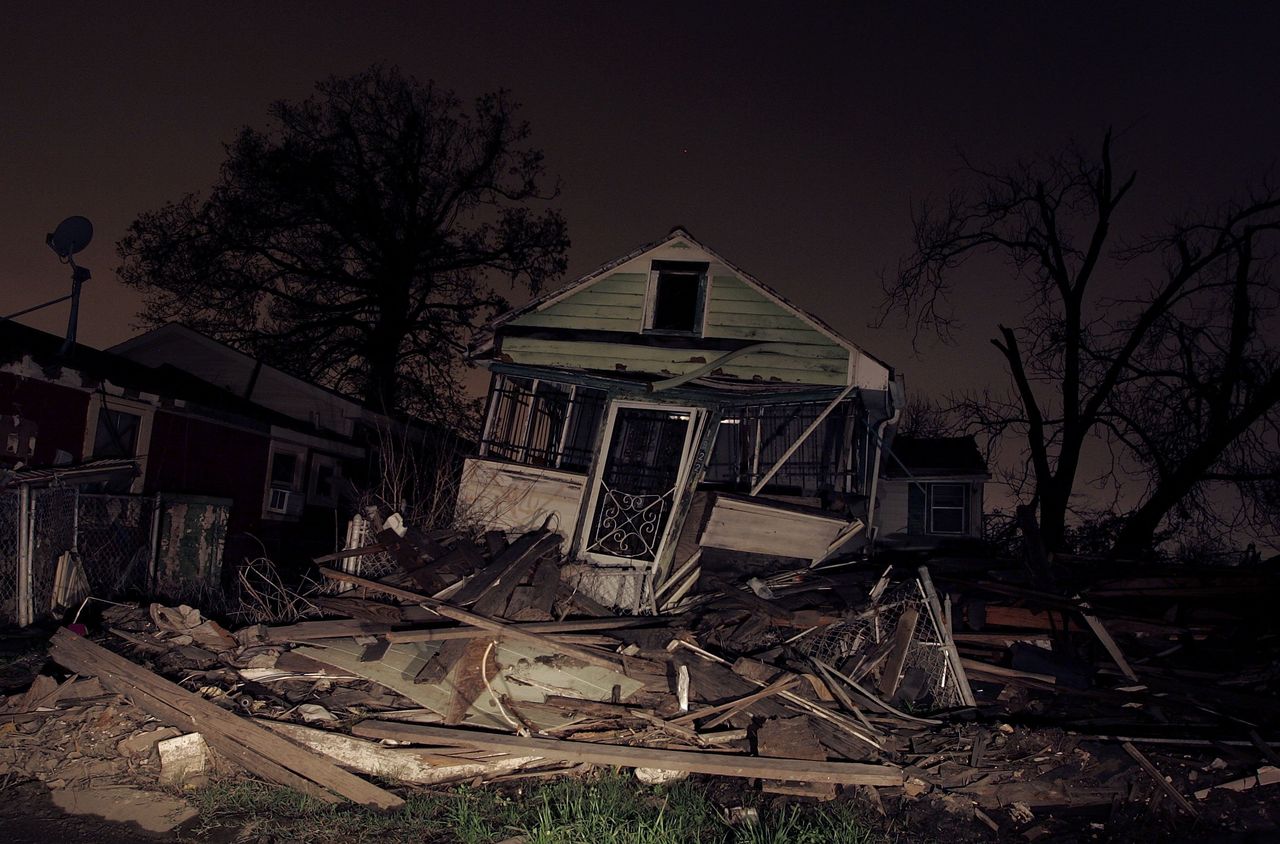A decade ago, Hurricane Katrina devastated New Orleans, claiming 1,800 lives and causing unspeakable destruction. But, parenthetically, experts say, the storm gave the reeling city no choice but to hit the restart button on some of its broken systems that were long overdue for repair, including education, low-income housing and health care. Here's how the city addressed some of those challenges -- both succeeding and failing along the way.
Da’ja's Story: From Struggling Reader to Valedictorian.
When Da’ja Simmons started seventh grade at her new charter school in New Orleans, she was nowhere near her grade’s literacy level. In addition to lagging behind academically when she started at Cohen College Prep, Simmons also lived in a homeless shelter for a year in eighth grade, after her father lost his job, making concentrating on her school work even more challenging.
“I was weak in math and reading,” Simmons, now 18, told The Huffington Post. “I would mix up simple words.”
Fast forward to last year, when Simmons was named valedictorian, accepted to 10 colleges and won $264,000 in merit scholarships.
Before the Hurricane Katrina, New Orleans was the second-lowest-ranked district in the second-lowest-ranked state in the country. In 2005, 62 percent of students were failing, according to district records.
Simmons' story represents that of many students who might not have succeeded to the same degree without the post-Katrina education system changes, experts point out.
For Simmons, that meant attending a charter school, where she said her teachers pushed her even more once they found out about her compromising situation. They guided her to the point that she was able to add Advanced Placement courses and Chinese to her packed schedule.
Back in 2005, there was some talk about introducing more charter schools, the kind Simmons benefited from, to help revive the education system. But supporters didn’t expect to see any swift changes.
“There would’ve been incremental government change,” Patrick Dobard, superintendent of the Recovery School District, told HuffPost. “We never would’ve made the long systemic changes we see now.”
Compounding the issue was the fact that critics were reluctant to accept what they viewed as a "top-down" costly system. They didn’t like that it would require mass firings and wouldn't necessarily take minority students' needs into consideration.
But when Hurricane Katrina hit, -- taking down 106 schools and sparking a fierce debate about poverty and race with it -- advocates seized the chance to start over and build a stronger system.

“It was a horrible catastrophe, but as we try to look for silver linings, if there’s any glimmer of hope, we were able to wholesale, put changes into place that have systemically improved the quality of schools."”
- Patrick Dobard, superintendent for the Recovery School District in New Orleans
Faced with rebuilding an entire system from scratch, the Louisiana Legislature handed over the majority of Orleans Parish public schools to the Recovery School District. The entity was created to transform failing institutions into high-performing charter schools.
"It was a horrible catastrophe, but as we try to look for silver linings, if there’s any glimmer of hope, we were able to wholesale, put changes into place that have systemically improved the quality of schools," Dobard said.
Today, 92 percent of students are enrolled in charter schools. And supporters of the model are quick to tout its successes.
In 2004, 54 percent of high schoolers graduated from high school. A decade later, that figure jumped to 73 percent.
Grades in the city are up, too.
Last year, just 6 percent of students were failing, according to statistics released by New Orleans Public Schools.
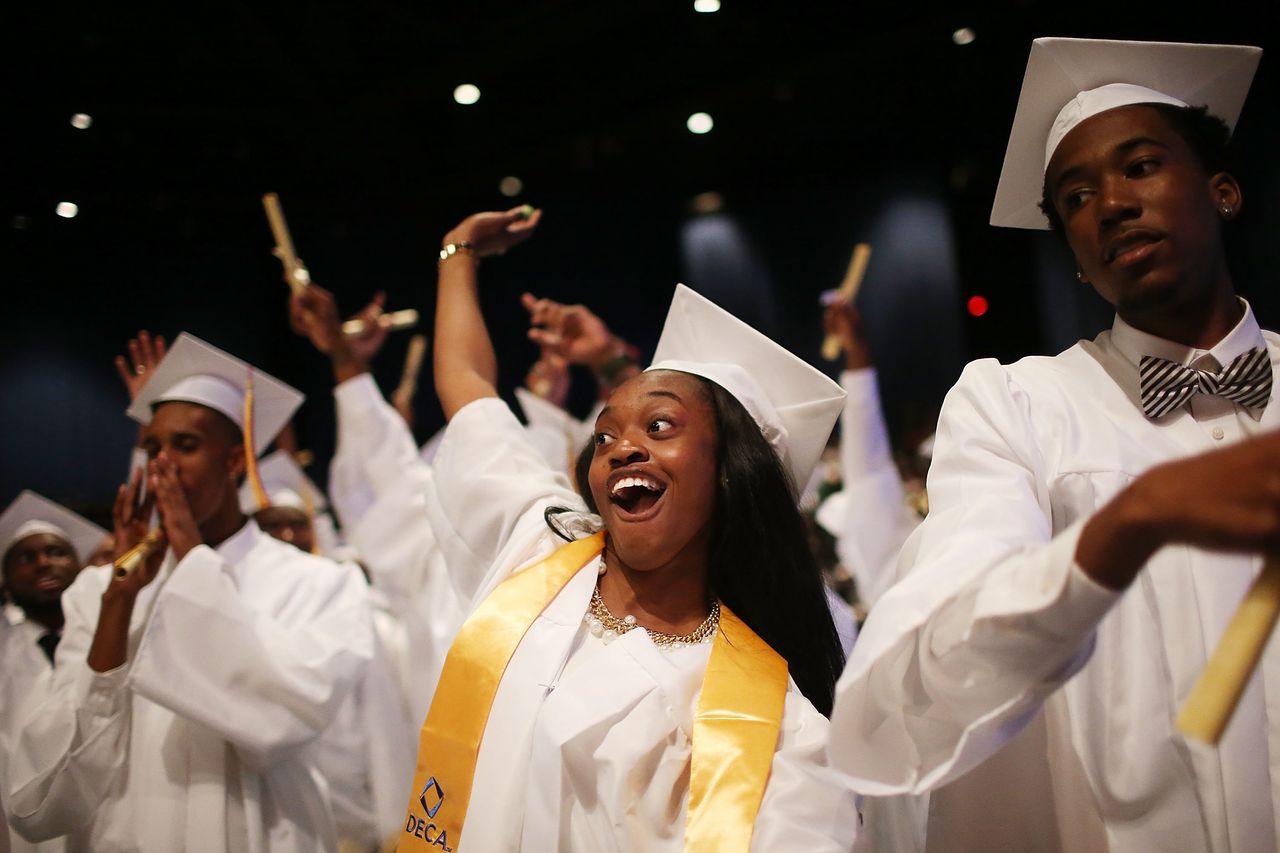
But Some Say the Numbers Don’t Tell the Whole Story.
From the perspective of many, the changes in education haven't been strictly a success story.
Administrators have been criticized for being quick to resort to suspending and expelling students who misbehave, which has helped boost figures and has also disproportionately affected minorities.
Louisiana schools are twice as likely to suspend black students as they are white students, according to a 2010 study conducted by the National Economic and Social Rights Initiative and the Family and Friends of Louisiana's Incarcerated Children.
"The unfortunate reality of 'three strikes you're out' and other unnecessarily harsh policies [is that they] have escalated the pushing of young people out of school and down a pipeline to dropout, unemployment and prison," Julian Heilig, a professor of educational leadership and policy studies at California State University, Sacramento, told HuffPost.
The other concerning issues, advocates say, is that too few minority teachers were hired in the aftermath and that systemic issues that pertain specifically to underserved students weren't addressed.
Prior to Hurricane Katrina, New Orleans had a higher proportion of black teachers than most urban U.S. school districts.
During the 2003-2004 school year, 71 percent of New Orleans public school teachers were black, according to the Education Research Alliance for New Orleans.
By 2014, that figure dropped to 49 percent.
Heilig, and others agree, that black leaders were “sidelined” in the process. They say that more money should’ve been invested in early childhood education and increasing parental engagement, as well as access to health, social and other services at-risk students need to stay on track.
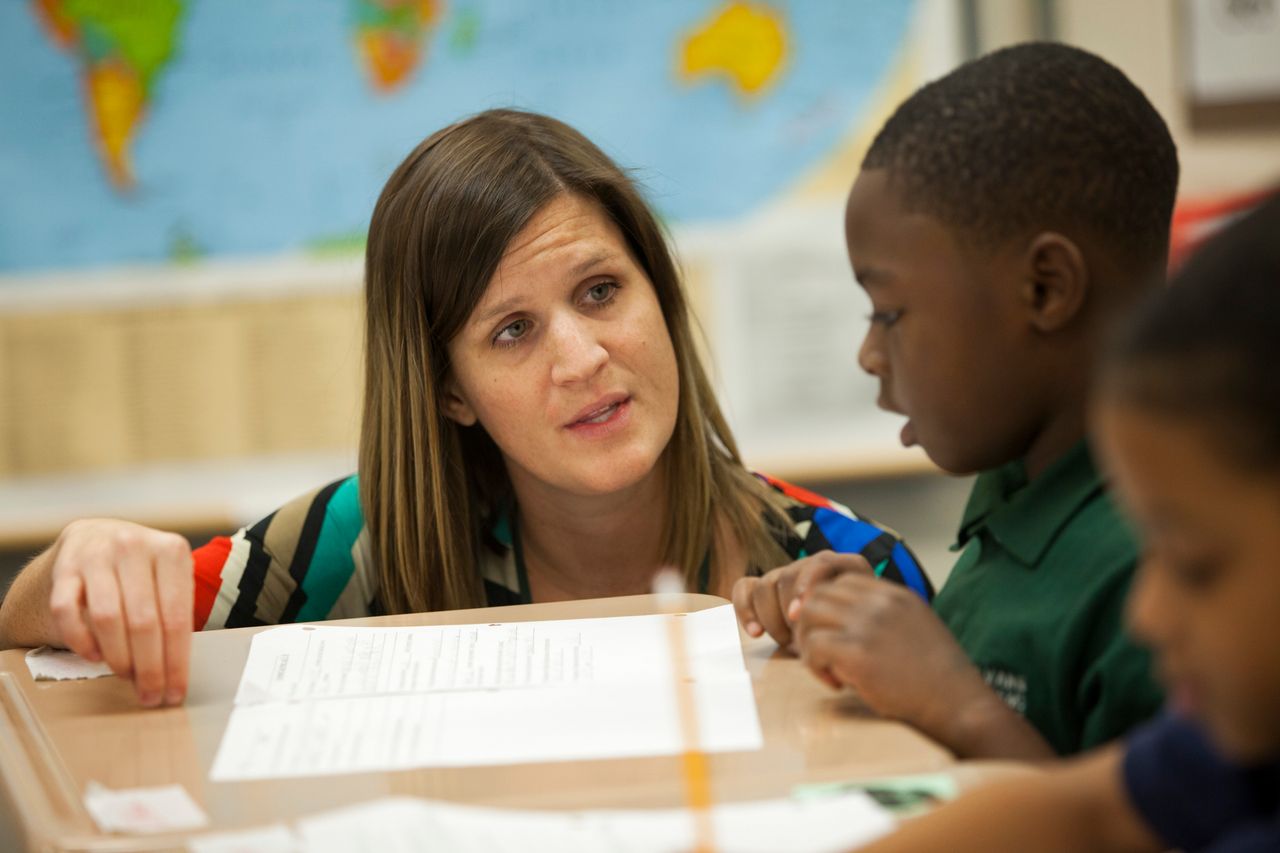
Third grade teacher Leah Logan teaches math, science and social studies at Sylvanie Williams College Prep elementary school, on January 16, 2015 in New Orleans, Louisiana.
But Dobard continues to stand by the charter school model New Orleans has pioneered -- noting that the district plans to address issues related to expulsion and is gearing up to roll out a robust program for students with special needs.
He also noted that schools still have to meet a rigorous set of standards in order to stay in business.
When a school is up for renewal, it goes through an extensive review process and if it’s not meeting expectations, the RSD has the power to shut it down or transfer its leadership, Dobard said.
Dobard says that the schools that do thrive, do so mainly because of the “direct control” each entity is granted.
For example, if a school feels the need to stay in session longer than the prescribed 180 days in order to get students caught up, it has the ability to do so. They also have more control over budgets, transportation and meal plans than standard public schools do.
Some students, like Simmons, say that giving teachers more autonomy over how they instruct is what enables them to succeed.
“The teachers actually taught us instead of just giving us work, and helped us with anything we needed,” Simmons said. “They actually challenged me instead of just giving me the answers. They actually pushed to think.”

New Orleans Rolls Up Its Sleeves To Help Build Homes
Before Hurricane Katrina hit, elite local institutions -- like the Tulane School of Architecture, -- were considered removed entities that were completely out of touch with struggling residents' needs.
In fact, one local recently told NPR that he saw the Tulane school as home to snooty “trust fund babies.”
But after the storm displaced more than 1 million people in the Gulf Coast region and destroyed 134,000 housing units in New Orleans alone, Tulane and other prominent entities felt the need to take pause and reassess their role in the community.
"I sort of stopped writing papers and started taking bold steps with students to build things," Scott Bernhard, a professor who spearheaded the school’s post-Katrina projects, told NPR.
So, in 2005, the school established URBANbuild in order to apply its rich resources to helping to rebuild decimated neighborhoods.
At the city’s peak in 2007, more than 11,000 people were homeless, according to a new report released by UNITY, a coalition that provides housing and services to homeless people and at-risk individuals in New Orleans and Jefferson Parish.
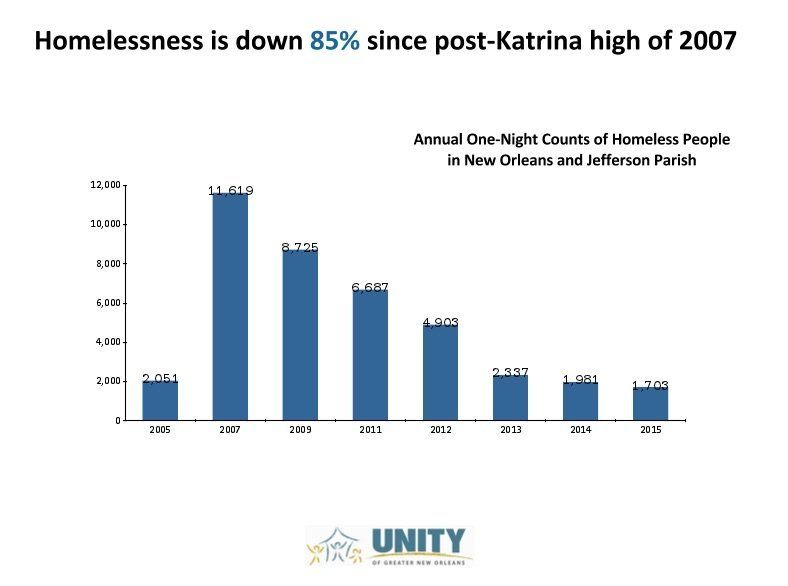
Tulane’s program is an example of just one innovative program that has helped to aggressively tackle New Orleans’ homelessness crisis.
URBANbuild collaborates with a number of local groups, including Brad Pitt’s Make It Right nonprofit, to build homes for people in need in the area. Since then, it has built six houses for struggling families.
Altogether, the school has helped develop more than 80 local projects that use design to improve the community.
Over the past eight years, homelessness figures have dropped by 85 percent.
On a single night in January, there were 1,703 people without homes, still much higher than such comparably sized cities as Chicago and Baltimore, but a notable decline.
To be sure, the rate of homelessness, which compares its unsheltered population to the general population, is 14 percent higher than it was in 2005. But, part of that is due to the fact that the city’s general population is significantly lower than it was before Katrina.
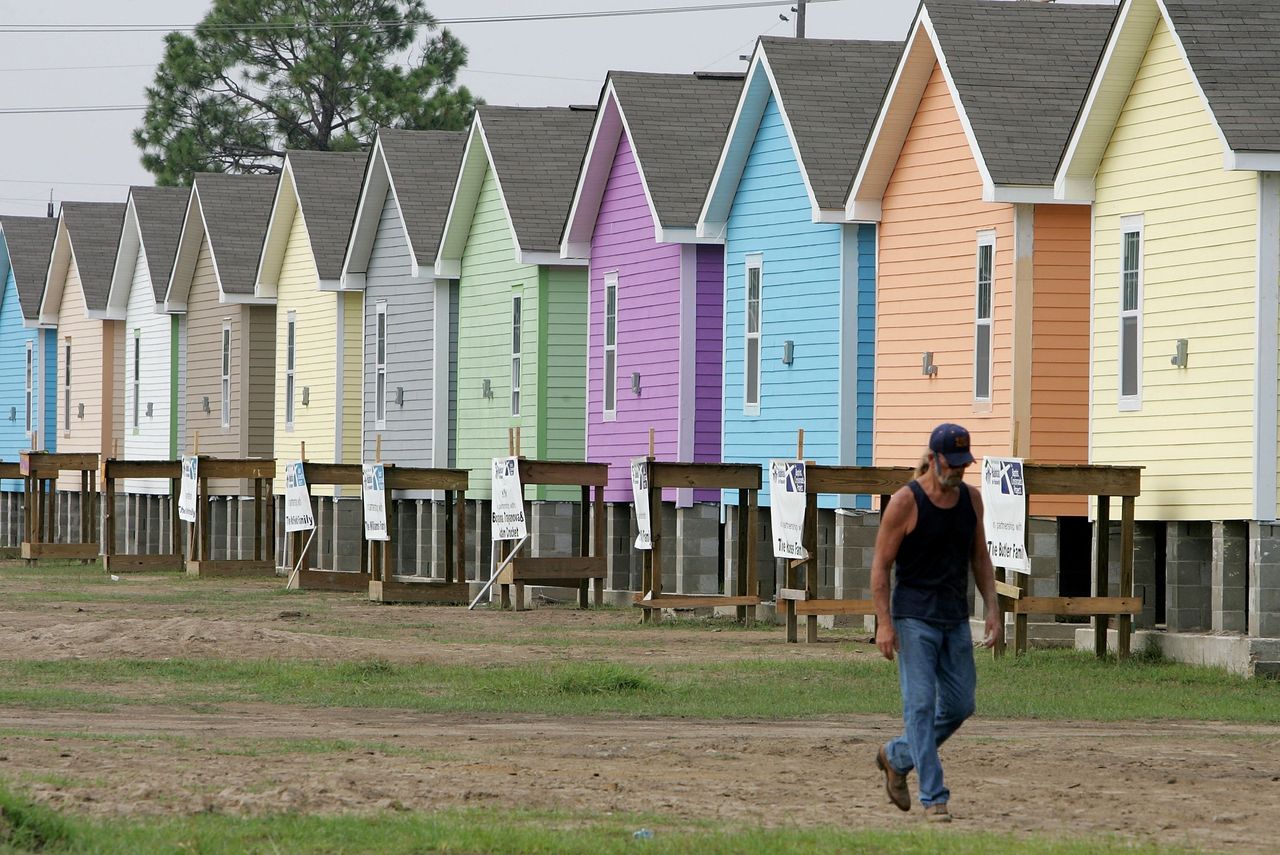
New Orleans was able to reduce its post-Katrina homeless population to this point with its Permanent Supportive Housing program, according to UNITY. People who qualify are granted permanent rent subsidies, primarily in privately owned apartments. Residents are then connected with case managers who oversee their medical needs, and other issues, to ensure that they can remain living independently.
City Is One Of First To End Chronic Vet Homelessness.
What’s perhaps most noteworthy, though, is how in the years since the storm, New Orleans has catapulted to the forefront of the fight to end veteran homelessness -- an accomplishment that has elicited praise from first lady Michelle Obama.
In January, it became the first major city to end chronic veteran homelessness.
By employing the housing first method, an approach that champions providing homes to homeless people and then addressing their health and employment issues, New Orleans has accomplished what other similar-sized cities haven’t yet been able to do.
Last July, Mayor Mitch Landrieu committed to joining the first lady’s Mayors Challenge to End Veteran Homelessness and within six months, surpassed its original goal by housing 227 homeless veterans. It succeeded in doing so by bringing together agencies that hadn’t previously worked together. Now that it’s combined such existing resources, the city is able to house a homeless veteran within 30 days.
"You all have proven that even in a city as big as New Orleans, veteran homelessness is not a reality we have to accept,” Obama said, according to The Times-Picayune. “It's not an impossible problem that is too big to be solved. We want cities across this country to follow your lead."

Still, the city continues to be plagued by crushing poverty rates and a dearth in affordable housing, which has hampered its homelessness efforts.
Before the hurricane, more than half of all apartments in New Orleans rented for less than $500 a month, according to UNITY. Now, the fair-market rent for a one-bedroom apartment is $767, well above what low-wage workers can afford.
Often, though, it’s been finding the resources to rebuild deteriorating structures that’s posed the biggest challenge.
Even before Katrina, the city had a sizable number of blighted properties it didn’t have the resources to fix. The hurricane only exacerbated that situation. By 2010, there were over 43,000 dilapidated properties and empty lots -- more than a quarter of New Orleans’ total housing stock, according to a report released by the city.
Many owners who didn’t have the funds to repair their devastated homes, simply abandoned them.
Making such properties available for habitation has been critical considering how much housing prices have spiked since Katrina.
In 2010, Landrieu committed to addressing the issue, and in a matter of three years, reduced the number of blighted properties by 10,000. The mayor succeeded in doing so by collaborating with private and public partners, and commissioning help from the public, too.
Among its multi-thronged approach, the city reopened negotiations with FEMA to demolish 919 units, prioritized city funding for the rehabilitation of dilapidated properties and fixed up 520 homes belonging to low-income owners who didn’t have the funds to do so.

Low-Income Patients Get More Timely, Quality Care.
Even before Katrina, New Orleans’ public healthcare system was flailing.
Neighborhood primary care facilities, where low-income patients could develop relationships with their doctors, essentially didn’t exist. As a result, patients turned to the historic Charity Hospital, which accepted all patients no matter what they could afford. But as the region’s only level 1 trauma center, it simply didn’t have the infrastructure to support clients’ needs.
Patients would wait, on average, in excess of six months just to book a basic primary care visit, Dr. Peter DeBlieux, interim Chief Medical Officer at University Medical Center New Orleans, told HuffPost.
The hospital also didn’t meet federal standards at the time, but it was allowed to remain open because it was the only safety net facility in the area, DeBlieux added.

LSU Medical School and Tulane Medical School personnel listen New Orleans Mayor Mitch Landrieu participates in a groundbreaking ceremony for a $1.2 billion hospital complex that in part replaces Charity Hospital, which was damaged by Hurricane Katrina and has been closed since, in New Orleans, Monday, April 18, 2011.
But after the hurricane, when Charity Hospital was forced to close its doors because the cost to repair the institution was too great, the medical community was compelled to reevaluate how it could rebuild a more resilient system that better served its entire patient population.
A New Medical Center Opens Its Doors
On Aug. 1, with $1.1 billion in federal, state and private rebuilding money, the city opened the doors to the 2.3-million-sqaure-foot University Medical Center New Orleans, which replaced the destroyed Charity Hospital.
Over the past 10 years, a number of community partners came together to open more than 70 neighborhood health clinics that give patients long-overdue access to primary care and disease prevention, Warner Thomas, president and CEO of Ochsner Health Center, wrote in a blog for HuffPost. Many of those clinics have direct links or affiliations with UMC, which allows patients to book appointments within one to two days, according to DeBlieux.
While Louisiana's largest teaching and training hospital boasts state-of-the art equipment and striking designs, DeBlieux, who worked at Charity Hospital for more than 20 years, says the mission to serve as a safety net hospital hasn’t changed one iota.
“At no point in time has our mission changed,” DeBlieux said. “No one has shied away from that mission. No one has shirked it.”
The 446-bed hospital is open to anyone who needs care, just as it was before, it now just also has a more sustainable business model.
After its horrific experience during Katrina, the medical community vowed to build a facility that could withstand the next once-in-50-years storm, and it has.
All of the hospital’s critical functions are located 21 feet above base level flood elevation. With its storm-resistant technology, UMC can withstand a hurricane with a force of 200 miles per hour. And, it could continue its operations for up to a week without any external support or supplies.
It has also developed a new and leaner business model.
Before, Charity Hospital relied solely on state and federal dollars and was serially underfunded, DeBlieux noted.
Today’s private-public model will allow UMC to still serve indigent populations, while also making itself a competitive option for Medicaid, Medicare and commercially insured patients in order to “attract all payers.”

“At this hospital, we welcome all patients.””
Every room in the hospital is private, with ample space for family members to stay over. The only exception is in the behavioral health section where sharing a room was deemed “therapeutic.” The hospital has also set a goal of developing programs that will enable patients to seek out specialty care locally at UMC, so they don’t have to travel out of state, or out of the region.
It’s also going to be a major economic driver in the community. Construction alone created thousands of jobs and the hospital currently employs more than 2,100 people. It’s expected to create hundreds more full-time positions in the next few years, according to UMC.
At its core, DeBlieux says, UMC aims to be a more inviting facility, and has kept intact its purpose of providing healing to every patient who walks through its doors.
“In 1940, [when it opened], Charity Hospital was considered the preeminent hospital in the world. People who sought care there, thought, ‘Well, I have a seat at the table,’” DeBlieux said. “That history has not changed. At this hospital, we welcome all patients.”
Read about what you can still do to help New Orleans here.

